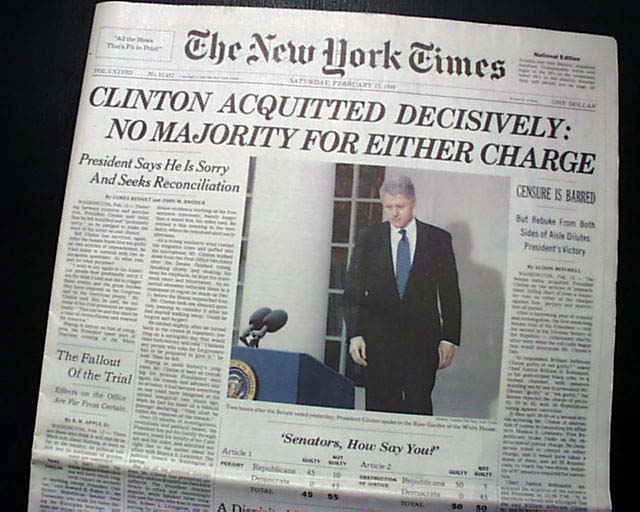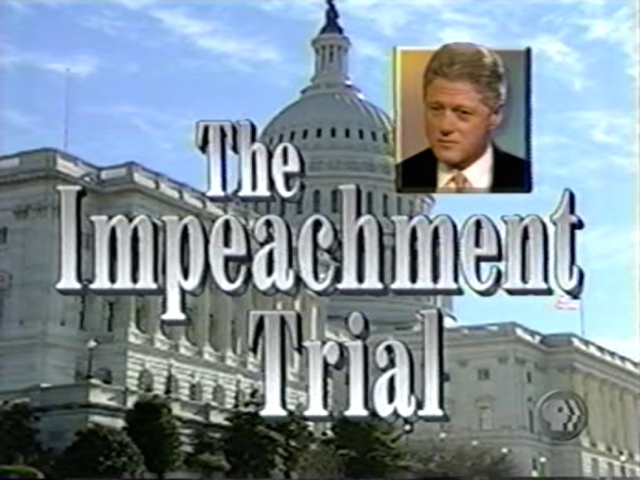


Mrozowski, a friend of Lowe’s, knew of a firm called Mindset that claimed to have the ability to encode analog tapes to DVDs in real time. It had been kept under wraps for roughly a month after it had been recorded, but this was about to change-on September 18, 1998, the House Judiciary Committee decided to release the whole thing to the public, creating something so compelling that cable news networks aired the whole thing in full.Īnd through a unique mixture of Silicon Valley connections and good timing, Netflix had found an opportunity to exploit this video to its advantage.
Bill clinton impeachment full#
(The full text of the testimony, as published in 1998, still resides on the Washington Post’s website.) This clip, unique in American history, begs for editing and curation, but despite this, there was a strong interest in the full video, thanks to its limited initial distribution. (As in 2020, the votes simply weren’t there.) The things he said during this recording directly led to his impeachment, though not his removal from office. In the fall of 1998, the march towards Bill Clinton’s impeachment proved an important growth hacking opportunity for the still-new company.Īs a piece of history, it’s unparalleled-no other president, including the current one, has ever subjected himself to this type of grand jury testimony. Oddly enough, such an opportunity surfaced in the news cycle. It needed something to sell the concept of DVDs-by-mail to the public. It was a neat idea-one that launched publicly in April of 1998-but the DVD was still very young, and Netflix's flat-fee casual rental strategy still hadn’t been uncovered. Hastings and Randolph, discussing the idea during commutes together, knew that its biggest advantage might be its size-which meant that it could be mailed very cheaply. According to Sound & Vision, about a million DVDs sold in that first year, despite only around 530 titles being on the market. At the time Randolph and Hastings found it, it was still an extremely expensive and fairly rare technology, with early DVD players selling for as high as $750 ($1,194 today). Built around a standard, it was clear that momentum could build around it becoming a mainstream way to record and distribute content, replacing both the VHS recording and the LaserDisc. The DVD had a lot of things going for it as an idea for distributing content. If anyone was going to find a way to turn this growth into a phenomenon, it was Marc Randolph and Reed Hastings, the cofounders of Netflix. In 1996, the first DVD players showed up in Japan, and by the middle of 1997, the U.S.


 0 kommentar(er)
0 kommentar(er)
